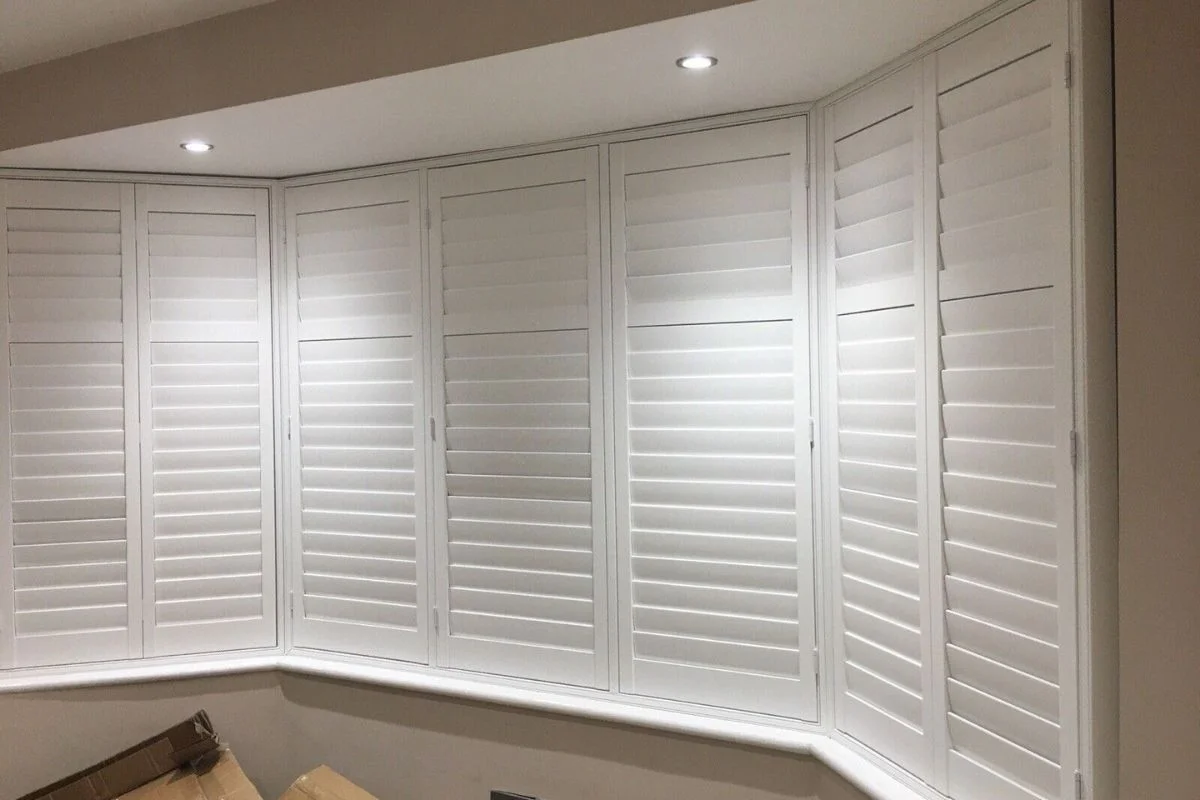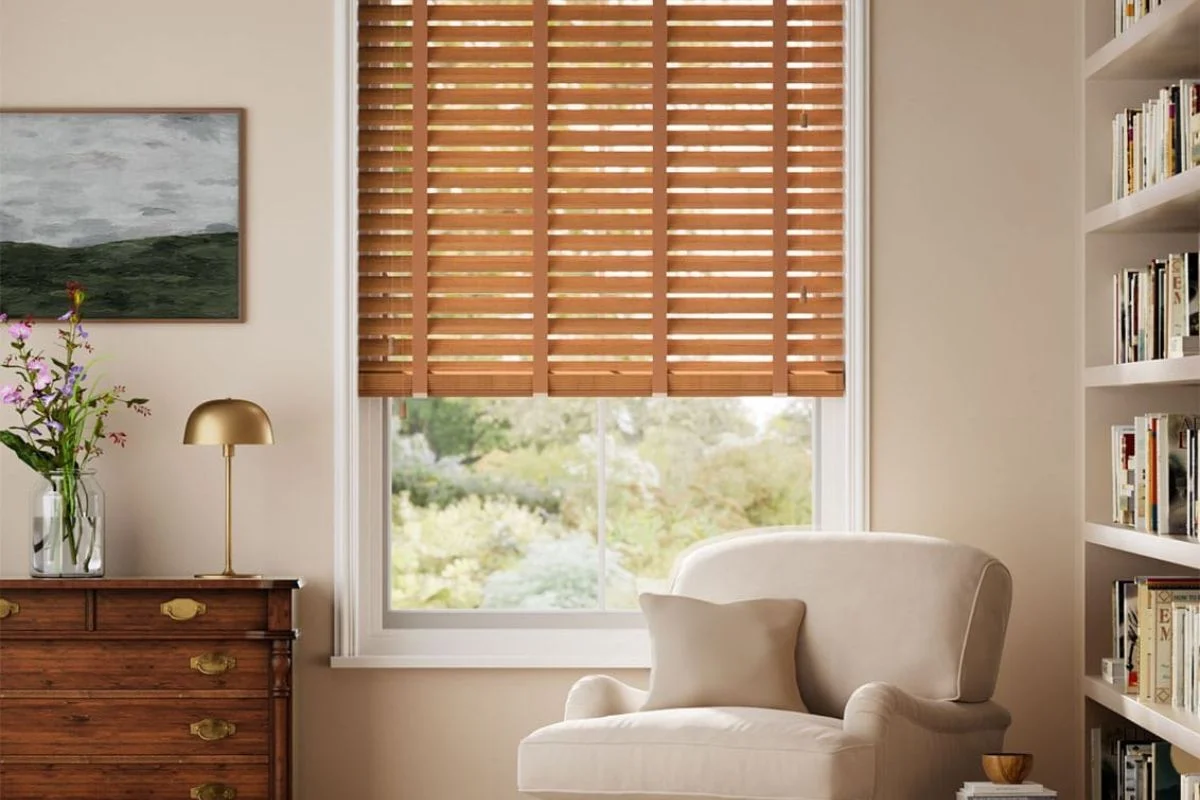In the ever-evolving realm of interior design, where trends come and go, there remains an enduring appeal in bringing the beauty of the outdoors inside our homes. In this pursuit of a timeless connection with nature, few elements achieve this with as much grace and authenticity as wooden blinds. Beyond mere window coverings, wooden blinds offer a unique opportunity to infuse spaces with a sense of natural beauty and warmth, seamlessly integrating with diverse design styles. Join us on a journey of exploration as we delve into the art of “Natural Beauty Indoors: Incorporating Wooden Blinds into Your Decor.”
Wood, with its innate grains, textures, and organic charm, has long been a material of choice for those seeking to create interiors that echo the tranquility and authenticity of the natural world. Wooden blinds, with their elegant simplicity, not only serve a practical purpose in controlling light and ensuring privacy but also bring a touch of the outdoors into our living spaces. As we explore the various facets of incorporating wooden blinds into decor, we will uncover the transformative power they hold in enhancing the aesthetics of our homes.
Brief overview of the enduring appeal of wooden blinds in interior design
Wooden blinds hold an enduring appeal in the realm of interior design, seamlessly blending timeless aesthetics with practical functionality. Their classic charm and natural warmth make them a versatile choice that has stood the test of evolving design trends.
The enduring allure of wooden blinds lies in the inherent beauty of wood itself. With its distinctive grains, textures, and organic character, wood brings a touch of the outdoors into the heart of our homes. This connection with nature fosters a sense of tranquility and authenticity, creating spaces that feel welcoming and harmonious.
One of the remarkable features contributing to the enduring popularity of wooden blinds is their ability to seamlessly integrate with various interior design styles. Whether adorning the windows of a modern and minimalist space, a classically inspired room, or an eclectic environment, wooden blinds effortlessly complement diverse aesthetics. The adaptability of wood in terms of finishes, stains, and slat sizes allows for customization, ensuring that these blinds can be tailored to suit individual tastes and specific decor themes.
Beyond their aesthetic appeal, wooden blinds offer practical benefits that contribute to their timeless relevance. They provide effective light control, allowing residents to play with natural light and create dynamic atmospheres. The balance between light management and privacy makes wooden blinds a functional choice for any room in the house.
Moreover, the sustainability and eco-friendly nature of wooden blinds enhance their appeal in the context of contemporary living. Choosing wood as a material aligns with a growing commitment to environmentally conscious practices, making these blinds a responsible choice for those seeking both style and sustainability in their homes.
Benefits of Wooden Blinds
Wooden blinds are a timeless and elegant window treatment option that brings numerous benefits to your home. Here are some key advantages of choosing wooden blinds:
Natural Aesthetic Appeal:
Wooden blinds add a touch of natural beauty to any room. The warm tones, unique grain patterns, and organic textures of wood create a visually appealing and inviting atmosphere.
Versatility in Design:
Wooden blinds seamlessly integrate with various interior design styles, from classic and traditional to modern and minimalist. The versatility of wood allows for customization, ensuring they complement any decor theme.
Light Control:
One of the standout features of wooden blinds is their effective light control. The adjustable slats allow you to regulate the amount of natural light entering the room, creating a comfortable and ambient atmosphere.
Privacy Enhancement:
Wooden blinds offer enhanced privacy, especially when compared to lighter window treatments. By adjusting the slats, you can control the level of visibility into your home without completely blocking out natural light.
Durability and Longevity:
High-quality wooden blinds are known for their durability and longevity. With proper care, they can withstand the test of time, making them a long-term investment in your home’s decor.
Customization Options:
Wooden blinds come in a variety of wood types, finishes, and slat sizes, providing homeowners with ample customization options. This allows you to tailor the blinds to match your specific design preferences and the aesthetic of your space.
Energy Efficiency:
Wood has natural insulating properties, making wooden blinds effective in regulating indoor temperatures. They provide insulation against both heat and cold, contributing to energy efficiency and potential cost savings on heating and cooling.
Easy Maintenance:
Cleaning and maintaining wooden blinds is relatively straightforward. Regular dusting and occasional wiping with a damp cloth are usually sufficient to keep them looking fresh and well-maintained.
Timeless Elegance:
Wooden blinds exude a timeless elegance that transcends design trends. Their classic and sophisticated appearance ensures they remain a stylish choice for any room in your home.
Sustainable Choice:
Opting for wooden blinds made from sustainably sourced materials promotes eco-friendly living. Many manufacturers prioritize responsible forestry practices, making wooden blinds a sustainable and environmentally conscious choice.
Increased Home Value:
The addition of wooden blinds can enhance the overall value of your home. Their timeless appeal and quality craftsmanship contribute positively to the perceived value of the property.
Reduced Allergens:
Unlike fabric window treatments that can harbor dust and allergens, wooden blinds are hypoallergenic and easy to clean. This makes them an excellent choice for individuals with allergies or respiratory sensitivities.
Sustainable Living with Wooden Blinds
In a world increasingly focused on environmentally conscious choices, the integration of sustainable elements into our homes has become a paramount consideration. Wooden blinds, crafted from a renewable and natural resource, exemplify an eco-friendly option that not only adds aesthetic value to a space but aligns with the principles of sustainable living.
Responsible Wood Sourcing:
Forestry Certification: Many reputable manufacturers prioritize responsible wood sourcing by adhering to forestry certifications such as FSC (Forest Stewardship Council). This ensures that the wood used in the production of blinds comes from responsibly managed forests.
Promoting Biodiversity: Sustainable practices include forestry initiatives that promote biodiversity, supporting the health and resilience of ecosystems. Wooden blinds derived from responsibly managed forests contribute to the conservation of natural habitats.
Low Environmental Impact:
Reduced Carbon Footprint: Compared to synthetic materials, the production of wooden blinds generally has a lower carbon footprint. Wood is a renewable resource, and the manufacturing process typically involves less energy consumption.
Biodegradability: Wooden blinds are biodegradable, meaning they break down naturally over time without leaving harmful residues. This characteristic reduces the environmental impact compared to non-biodegradable materials.
Longevity and Durability:
Reduced Waste: Wooden blinds are known for their durability, which contributes to a longer lifespan. The longer a product lasts, the less frequently it needs to be replaced, reducing overall waste.
Sustainable Investment: Choosing high-quality wooden blinds is an investment in longevity. Their durability means that homeowners are less likely to discard and replace them frequently, promoting a more sustainable approach to consumption.
Energy Efficiency and Insulation:
Natural Insulation: Wood has inherent insulating properties, providing a layer of thermal insulation. Wooden blinds contribute to energy efficiency by helping regulate indoor temperatures, reducing the need for excessive heating or cooling.
Potential Energy Savings: The insulation provided by wooden blinds can translate into reduced reliance on heating and cooling systems, potentially leading to energy savings over time.
End-of-Life Considerations:
Biodegradable Disposal: At the end of their lifecycle, wooden blinds can be disposed of in an environmentally friendly manner. Unlike synthetic materials, wood degrades naturally, minimizing the impact on landfills.
Recyclability: Some wooden blinds may be recyclable or repurposable, providing additional options for responsible disposal.
Educating Consumers:
Promoting Awareness: Manufacturers play a crucial role in educating consumers about the sustainability aspects of wooden blinds. Transparent information about sourcing and production practices helps consumers make informed and eco-conscious choices.
Encouraging Sustainable Choices: By highlighting the sustainability of wooden blinds, manufacturers contribute to a broader shift towards environmentally friendly consumer choices, fostering a culture of sustainability.
Cleaning and care tips for Wooden Blinds
Cleaning and caring for wooden blinds is essential to maintain their natural beauty and prolong their lifespan. Here are effective tips to keep your wooden blinds looking fresh and well-maintained:
Regular Dusting:
Dust your wooden blinds regularly using a soft, clean cloth or a feather duster. Start from the top and work your way down, ensuring all slats are thoroughly dusted.
Vacuuming:
Use a brush attachment on your vacuum cleaner to gently vacuum the blinds. This is particularly effective for removing accumulated dust from hard-to-reach areas.
Wiping with a Damp Cloth:
For deeper cleaning, dampen a clean, lint-free cloth with a mixture of mild wood cleaner or a solution of water and a small amount of dish soap. Wipe each slat individually, being careful not to saturate the wood.
Avoid Excess Moisture:
Wood and excessive moisture are not the best companions. When cleaning with a damp cloth, ensure it is only slightly moist, and immediately dry the slats with a dry cloth to prevent the wood from absorbing excess moisture.
Specialized Wood Cleaners:
Consider using specialized wood cleaners designed for wooden blinds. Follow the manufacturer’s instructions and test a small, inconspicuous area first to ensure compatibility with your blinds.
Protecting Against Sunlight:
Direct sunlight can cause wood to fade over time. Rotate the blinds regularly to ensure even exposure to sunlight, or consider adding sheer curtains to provide an extra layer of protection.
Addressing Stains Promptly:
If you notice stains or spots, address them promptly. Use a mild solution of water and white vinegar or a specialized wood stain remover. Gently blot the stained area without rubbing to avoid damaging the wood.
Oiling or Polishing:
Depending on the type of wood, you may choose to apply a small amount of furniture polish or wood oil to maintain the wood’s luster. Follow the product instructions and avoid over-application.
Using Protective Coatings:
Consider applying protective coatings, such as sealants or clear finishes, to enhance the wood’s resistance to stains and moisture. Consult with the blinds’ manufacturer for suitable products.
Regular Inspections:
Periodically inspect your wooden blinds for any signs of wear, damage, or loose components. Address any issues promptly to prevent them from worsening over time.
Child and Pet Safety:
If you have children or pets, ensure that any cords or strings are kept out of their reach. Use cord cleats or cord wind-ups to secure and manage cords, minimizing the risk of accidents.
Professional Cleaning:
For particularly stubborn stains or extensive cleaning needs, consider seeking professional blind cleaning services. Professional cleaners are equipped to handle delicate materials like wood.
Conclusion
In conclusion, the enduring appeal of wooden blinds extends beyond their aesthetic charm, encompassing their ability to bring a touch of nature indoors. As we’ve explored the benefits, sustainability aspects, and maintenance tips associated with wooden blinds, it becomes evident that these window treatments are not just a functional element but a timeless addition to home decor.









